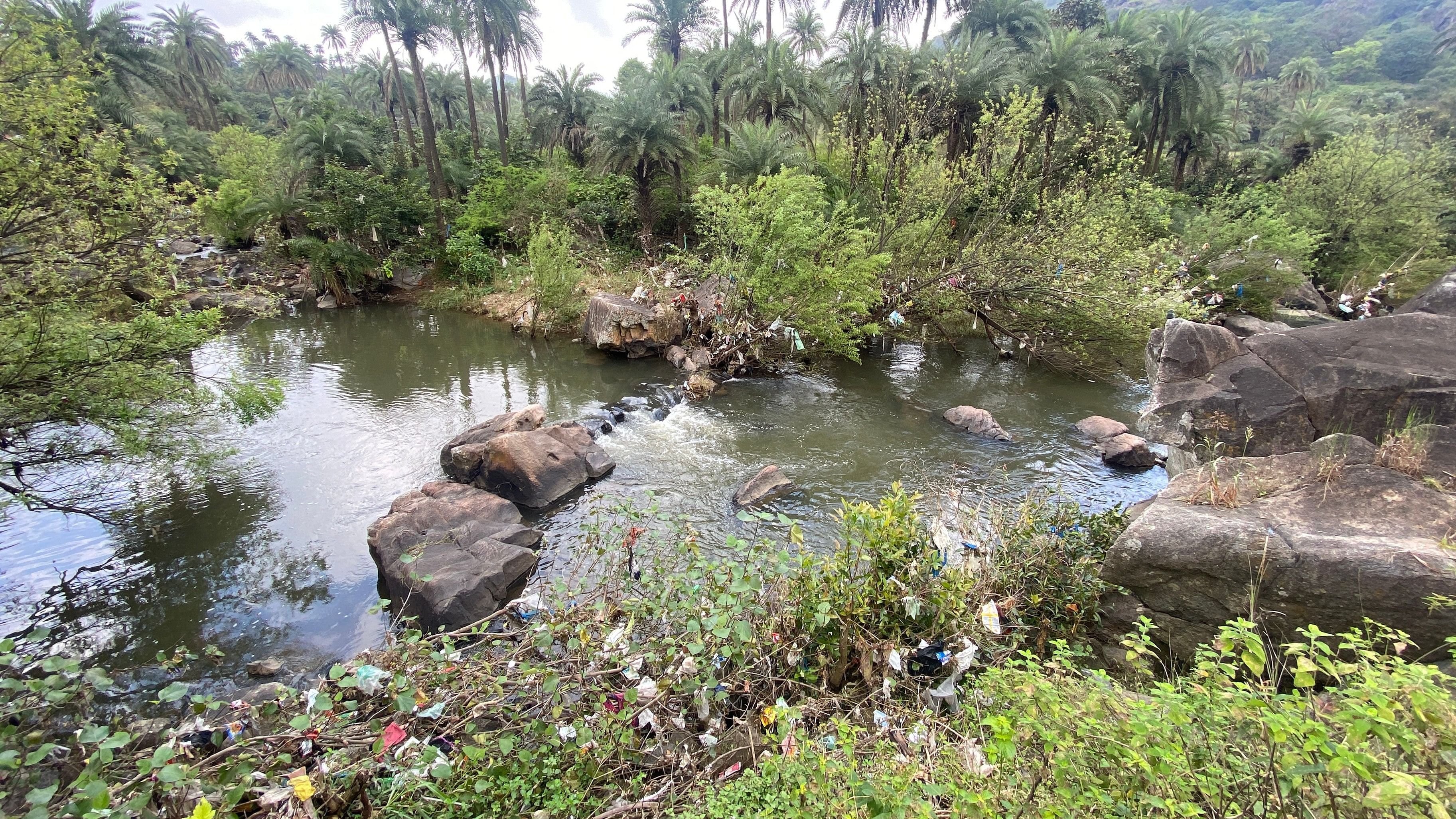
Mount Abu development.
Credit: Special Arrangement
In 2009, Mount Abu and the surrounding area comprising twelve surrounding villages were notified as an Eco-Sensitive Zone (ESZ) by the Ministry of Environment, Forest and Climate Change (MoEF&CC). A construction ban was formalised to control unchecked development and reduce the detrimental impact of human activity. It was hoped that the move would address considerable adverse environmental impacts on account of developmental activities in an ecologically important and biodiversity-rich area home to threatened wildlife. However, in reality, this ban has not been consistently implemented.
“If one of the purposes of the Mount Abu ESZ notification was to prohibit new constructions, how have certain areas of the town and surrounding villages grown? How has this been permitted? This is gross negligence and criminal”, says Rustom Cama, a prominent and long-established hotelier of Mount Abu, pointing to before-and-now satellite imagery of Mount Abu on publicly available Google Maps.
The hill station has witnessed a reduction in dense forest cover and habitat fragmentation. A 2017 study by the International Institute for Population Sciences pointed out that the hill station faces “serious environmental degradation” due to tourism. Landcover analysis showed an 8% reduction in dense and sparse forest cover between 1999 and 2013. A reduction in water quality was also found in the study.
Figures obtained from the Rajasthan Tourism Department revealed that over 3.5 lakh tourists visit Mount Abu every month, and Gujaratis account for over 90% of this number. Tourist arrivals increased by 310% between 2000-2021.
With the state border of alcohol-prohibited Gujarat located a stone’s throw away, Mount Abu has witnessed alarming environmental and social degradation. “We are seeing the very worst of alcohol-fuelled tourism. The drivers of this tragedy are businesses that have put forward personal gains without any futuristic vision.
To make matters worse, negligence and mismanagement by the local administration have facilitated an assault on the hill station’s very character and habitat. So much talk of Abu being the abode of gods! It is time to stop parroting this line and take steps to curb the menace,” says Teja Rana, belonging to the indigenous Bheel tribe.
ESZ regulations have proved to be a double-edged sword, allowing a black-market construction economy to flourish and benefit a select few. While residents face roadblocks in cutting through red tape to carry out limited, essential repairs of existing properties (as provisioned by the Mount Abu ESZ notification and subject to conditions), construction of luxury hotels goes unabated on the pretext of renovation.
Additionally, numerous properties operating under the guise of “adventure and nature camps” and commercially operated private residences have sprung up on or close to forest land. These developments are a grave threat to the habitat of threatened wildlife, including the green avadavat, sloth bear, and leopard, among others. The green avadavat is a globally threatened species with a very restricted range, and Mount Abu is its principal stronghold.
Intoxicated tourists entering protected forested areas with blaring music and littering the hillsides with plastic and smashed glass bottles are now a significant cause of severe habitat disturbance. Despite possessing enormous power to remedy the situation, the Forest Department has failed to curb violations. Furthermore, residents also need to better understand why laws are essential.
“When public misconduct occurs opposite government offices, a blind eye is turned. The place has effectively transformed into one open-air bar with aggressive habitat disturbance. There is plastic and broken glass from bottles at every corner of the town and hillsides,” stated an advisory forest committee member preferring anonymity.
Frequent attempts by influential parties to expand facilities and infrastructure to cater to increasing tourist numbers at the expense of diluting ESZ laws are flawed and will further harm the hill station’s environment and character. With glaring examples from the Himalayan region, Mount Abu has lessons to learn while facing the harsh reality of climate change already affecting the region. Since 2020, the hill station has witnessed increased intense and unseasonal weather events.
Unmanaged influxes of tourists and seasonal workers choking the resources of the hill station must be drastically controlled through a comprehensive tourism management plan without a valid Zonal Masterplan, reliable feasibility studies and assessments.
Such a plan must be devised only after discarding outdated, erroneous studies following a robust collection of housing data and assessing the actual carrying capacity of the hill station. The failure of authorities to act indicates that there is either a lack of comprehension of laws or the administration is complicit.
In a last-ditch attempt to salvage what remains, it is perhaps time to implement a model restricting all tourist vehicles and heavy traffic from entering the hill station by providing parking facilities in the foothills. This would reduce congestion on already choked roads, curb pollution, and increase employment for local transport businesses.
For outdoor and wildlife enthusiasts, the sprawl of the hill station is now beginning to echo Robert Frost's words, 'Nothing gold can stay.' However, a walk around the town would make even the most hardened raise an eyebrow. The poem was not meant to be taken this literally!
(The writer is a conservationist and undertakes work at Mount Abu Wildlife Sanctuary)